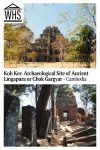Koh Ker: Archaeological Site of Ancient Lingapura or Chok Gargyar
By Rachel Heller
What is “Koh Ker: Archaeological Site of Ancient Lingapura or Chok Gargyar”?
Koh Ker was the capital of the Khmer Empire for a period of only 23 years in the 10th century. While little of the city has survived except in the form of archeological traces, about 180 Hindu temples remain over about 81 square kilometers (31 sq mi). Only about 40 of them are from that short period of being the capital.
Disclosure: This article contains affiliate links. Making a purchase through an affiliate link will mean a small commission for this website. This will not affect your price.
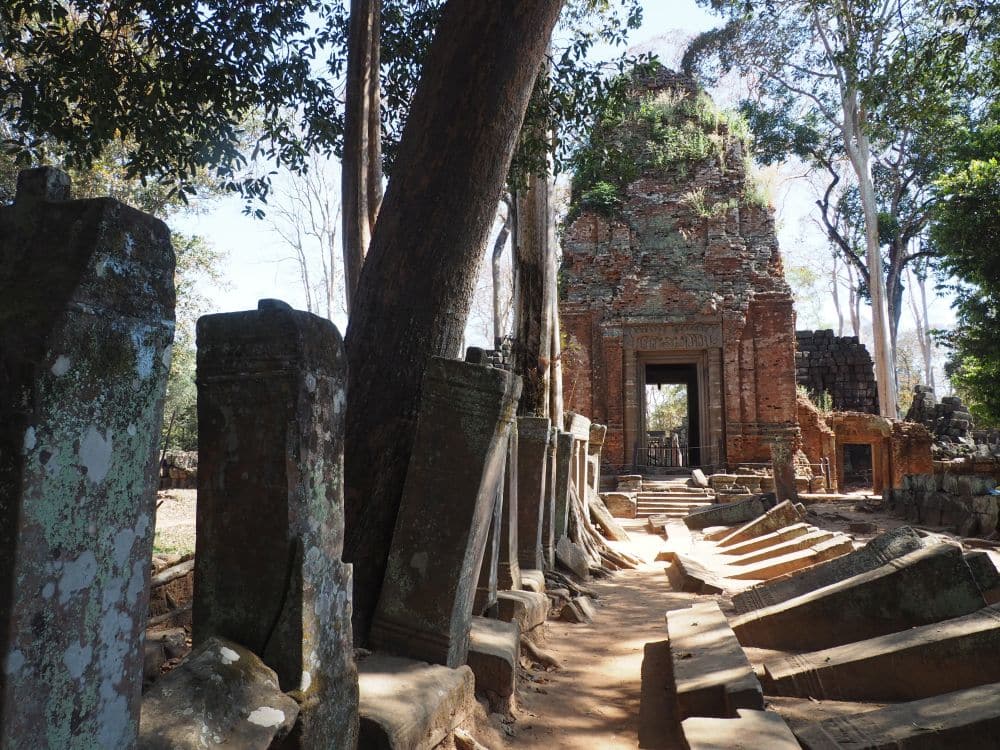
The temples were dedicated to Shiva, and built by King Jayavarman IV starting in 921 AD. For the first seven years of the city’s existence, there were two rival capitals of the Khmer Kingdom, here and Angkor. Koh Ker then became the only capital city but the next king moved the capital back to Angkor in 944.
These temples were built from a combination of clay fired bricks, sandstone and laterite. What is unusual about them is their use of a unique Koh Ker sculptural style, and also new technology that allowed the use of very large stone blocks.
While the ancient temples are called Koh Ker today, Lingapura and Chok Gargyar are the historical names for the city that once stood here.
Why is Koh Ker a UNESCO World Heritage site?
This is Cambodia’s newest UNESCO site, added to the list in 2023. According to UNESCO, “the archaeological site of Koh Ker exhibits in an exceptional way the interchange of human values that resulted in the Koh Ker Style, a sculptural expression featuring bold, expressive imagery and a dynamic sense of movement that resulted from the fusion of Indian religious and artistic symbolism with local design concepts and artistic craftsmanship.” This style, despite how short-lived it was, was influential in succeeding periods not only in the Khmer Empire but throughout Southeast Asia.
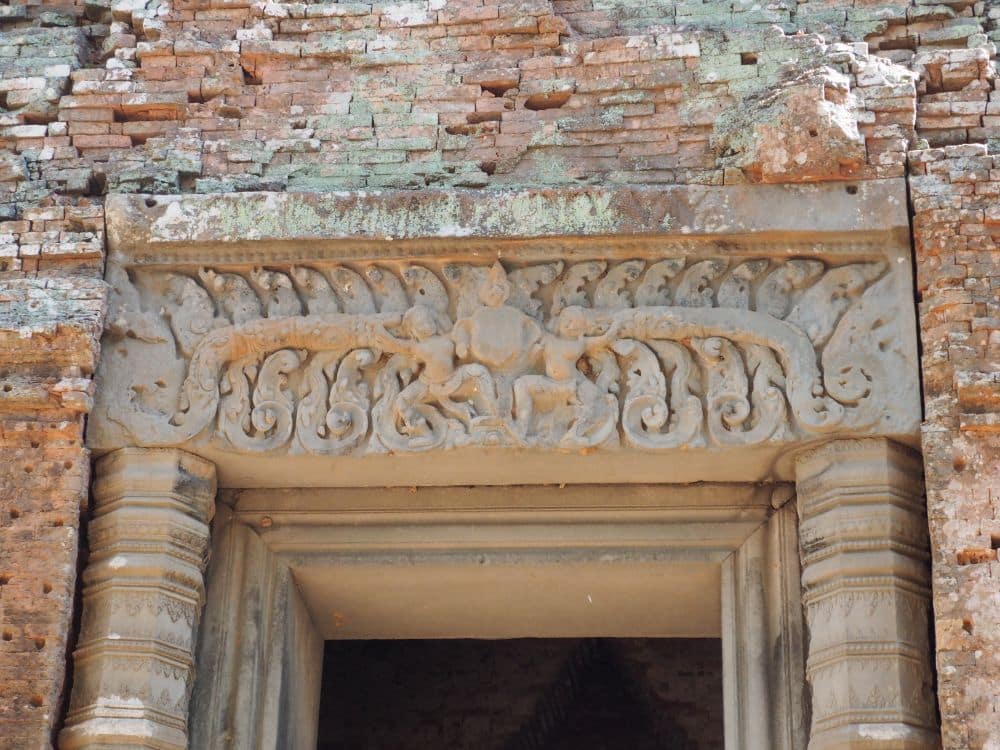
At the same time, the site was “a prototype of a new urban landscape” because of the use of huge monolithic building blocks. This technique influenced construction in places like Angkor.
What can you expect on a visit to Koh Ker?
You can only visit about 12 of the temples at the site. The rest either haven’t been excavated or the ground around them has not yet been cleared of landmines. The ones that you can still see are generally square and either made of red brick in a rounded-top tower style, or they’re more blocky and made from much larger stone blocks.
The highlight of Koh Ker, though, is the large Prasat Thom temple, which rises from the jungle like Central American pyramids such as Chichen Itza or Tikal. Spotting it as you walk the path is a “wow moment” for sure. It’s a step pyramid with seven steps, and you can climb to the top as well.
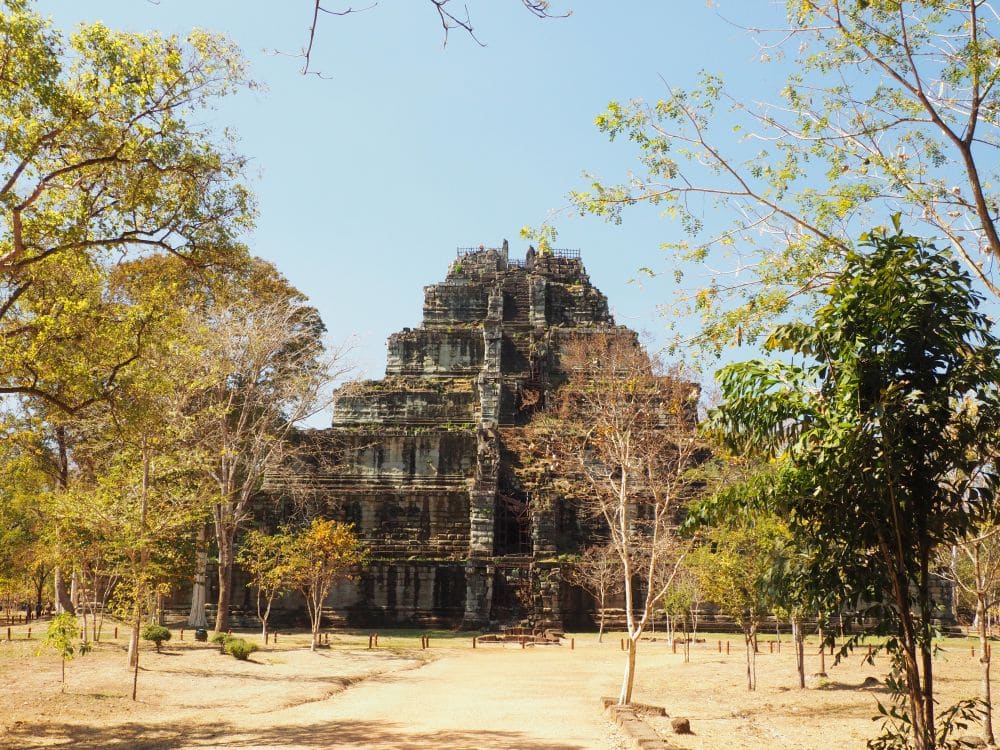
Is Koh Ker worth visiting?
It depends on how interested you are in visiting Hindu temples. If you like learning about ancient temple art and architecture, then it’s certainly worth visiting. If you don’t feel a need to visit more than one temple complex, go to Angkor instead, which is also easier to reach from Siem Reap. Of the four Cambodian UNESCO sites, Angkor and Preah Vihear are the best, in my opinion. On the other hand, the Prasat Thom temple has the highest “Indiana Jones” quotient. If you love this kind of site, combine Koh Ker with Preah Vihear.
What types of travelers would like Koh Ker?
Art, architecture and history geeks would like it. If these aren’t your thing, then skip it. While children would doubtless enjoy the climb up Prasat Thom, it’s also steep and scary, so it might not be wise, depending on their age and agility.
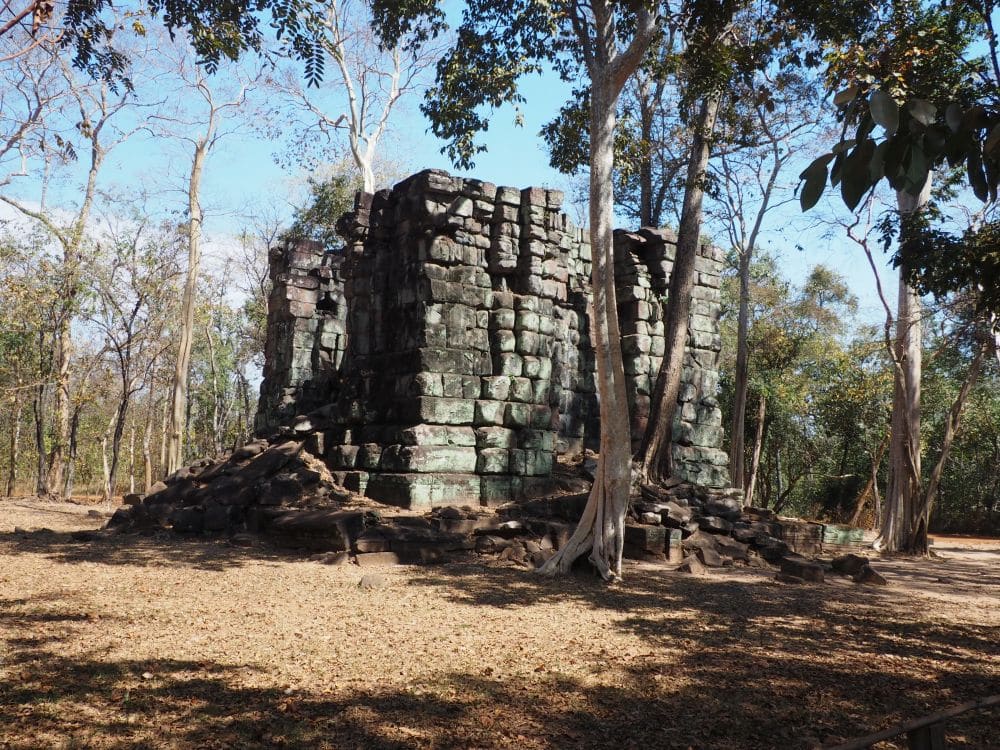
Tips for visiting Koh Ker
Wear good walking shoes: you’ll be walking a lot and, if you want, climbing the pyramid. Also wear sunscreen and bring water.
Do not go off the paths to find your own way to additional temples. It’s not at all clear as you walk around what areas have been cleared of landmines and what haven’t.
Koh Ker is relatively wheelchair accessible, at least in the dry season. The paths are dirt and fairly even, so a robust wheelchair could probably manage it. You wouldn’t be able to climb the pyramid, but you could see it well from the ground.
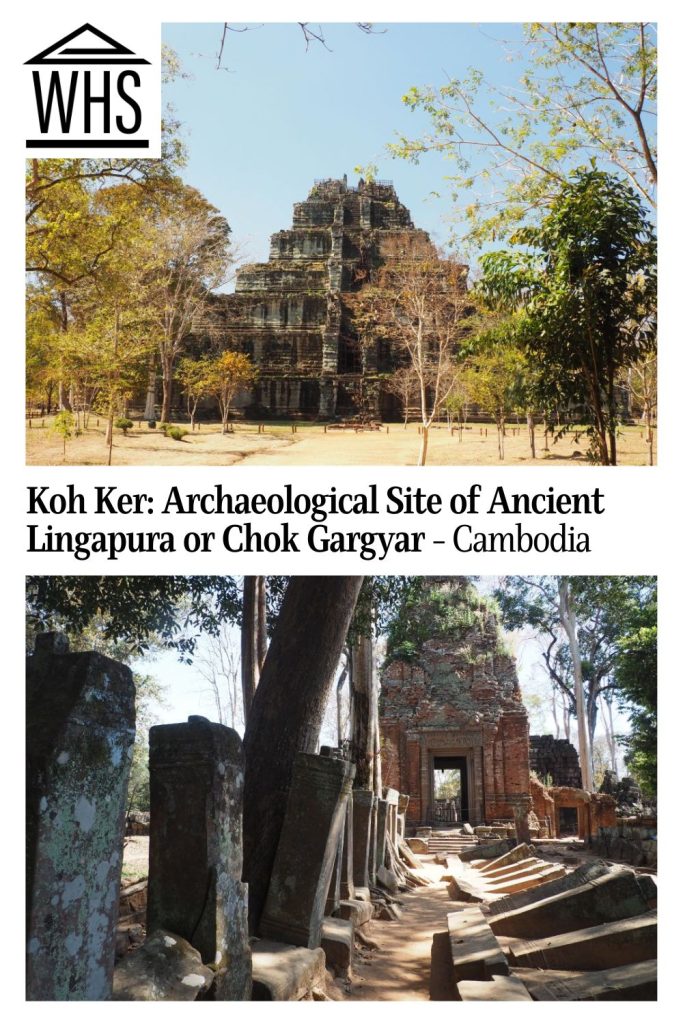
Where is Koh Ker?
Located about halfway between Siem Reap – home to Angkor – and Preah Vihear, this site would combine well with one or both. Rent a car from Siem Reap to see them yourself, which would have the added advantage of allowing you to visit a few of the more far-flung parts of Angkor. Or you can hire a car and driver with or without a guide for a bespoke tour. This is what we did.
You could also take a small-group tour from Siem Reap to visit Koh Ker, so you don’t have to arrange transportation yourself. Or take a private or group tour that includes both Koh Ker and Preah Vihear in one very long day. Click on the images below to see some options:
Koh Ker does not seem to have an official website. You might need to go through a tour company to be sure of opening times and admission fees.
Have you been to Koh Ker? If so, do you have any additional information or advice about this UNESCO World Heritage site? Please add your comments below!

